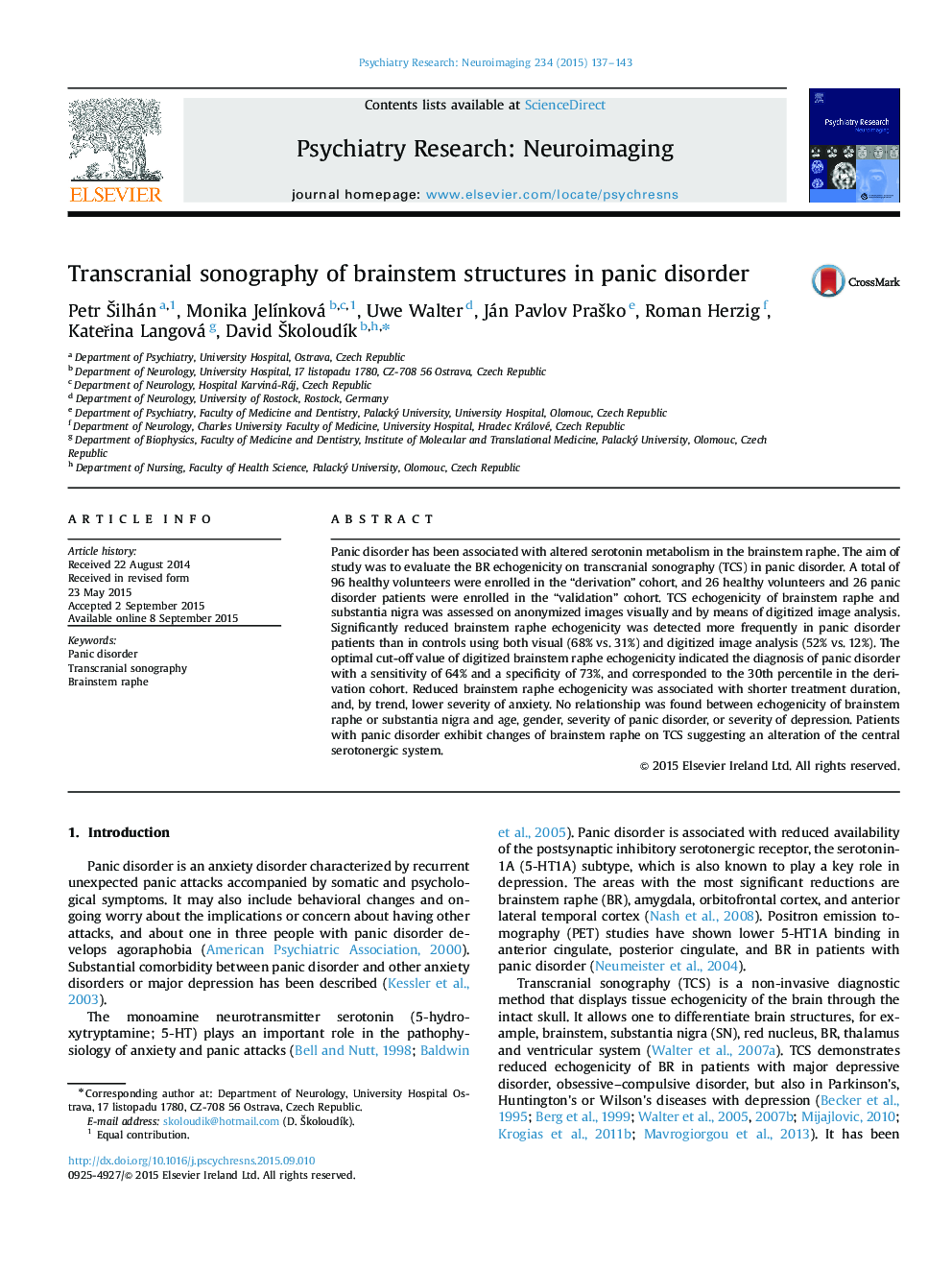| Article ID | Journal | Published Year | Pages | File Type |
|---|---|---|---|---|
| 335272 | Psychiatry Research: Neuroimaging | 2015 | 7 Pages |
•Patients with panic disorder exhibit changes of brainstem raphe on TCS.•Reduced brainstem raphe echogenicity was detected visually and by digital analysis.•BR echogenicity index negatively correlates with age and positively with BAI score.
Panic disorder has been associated with altered serotonin metabolism in the brainstem raphe. The aim of study was to evaluate the BR echogenicity on transcranial sonography (TCS) in panic disorder. A total of 96 healthy volunteers were enrolled in the “derivation” cohort, and 26 healthy volunteers and 26 panic disorder patients were enrolled in the “validation” cohort. TCS echogenicity of brainstem raphe and substantia nigra was assessed on anonymized images visually and by means of digitized image analysis. Significantly reduced brainstem raphe echogenicity was detected more frequently in panic disorder patients than in controls using both visual (68% vs. 31%) and digitized image analysis (52% vs. 12%). The optimal cut-off value of digitized brainstem raphe echogenicity indicated the diagnosis of panic disorder with a sensitivity of 64% and a specificity of 73%, and corresponded to the 30th percentile in the derivation cohort. Reduced brainstem raphe echogenicity was associated with shorter treatment duration, and, by trend, lower severity of anxiety. No relationship was found between echogenicity of brainstem raphe or substantia nigra and age, gender, severity of panic disorder, or severity of depression. Patients with panic disorder exhibit changes of brainstem raphe on TCS suggesting an alteration of the central serotonergic system.
Graphical abstractFigure optionsDownload full-size imageDownload high-quality image (120 K)Download as PowerPoint slide
